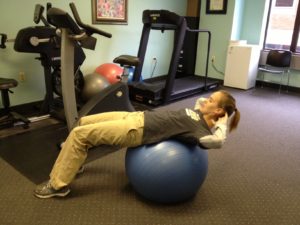Not performing your home exercises while undergoing physical therapy and even after discharge from physical therapy is comparable to taking only half of a prescribed antibiotic. You will not get the maximum outcomes from your physical therapy. The goal of the home exercise program is to re-condition the body, restore function, and reduce/manage symptoms.
Exercising at home helps to condition the body between physical therapy sessions. If a person relies only on physical therapy sessions and does not perform a home exercise program, the body will not build improved function or retain muscle memory between sessions.
Common reasons for not performing the prescribed exercises are decreased home exercises include pain with exercises, lack of motivation due to perceived lack of improvements, unhappiness from the loss of function caused by the problem, and just being plain busy. If you fall under any of the above categories, talk to your physical therapist so a practical and tailored exercise program can be developed and followed that match your lifestyle.

